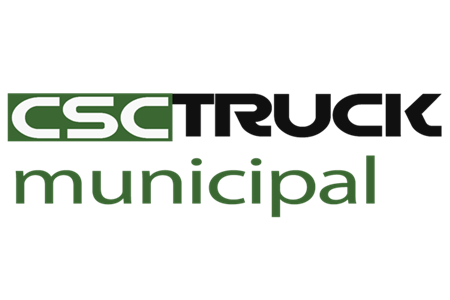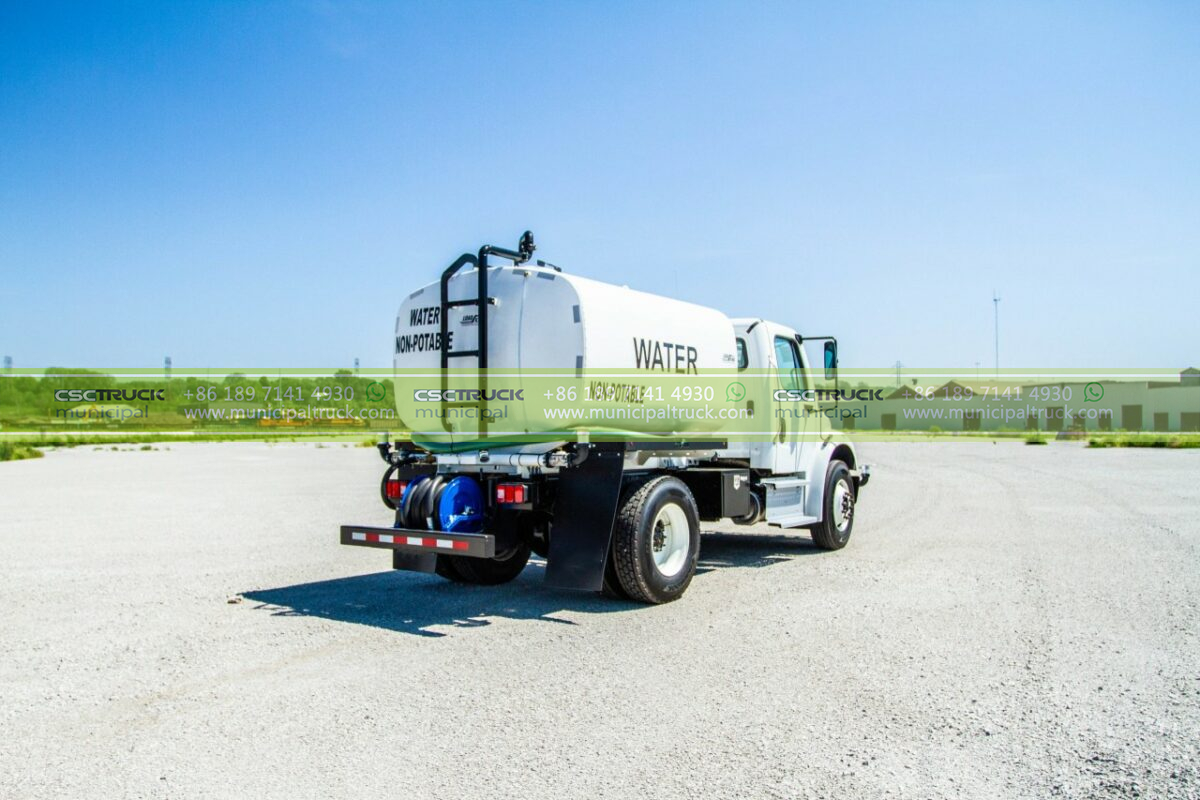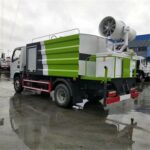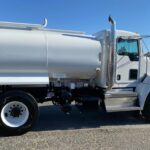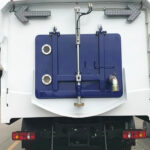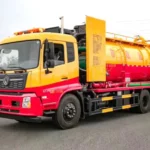In a landmark initiative to combat Zambia’s critical mining air quality crisis, CSCTRUCK Municipal has delivered 18 high-capacity water mist sprayer trucks to the Copperbelt Environmental Project (CEP) through a strategic partnership with Zambia Consolidated Mining Services (ZCMS), the nation’s premier mineral extraction contractor. This $15.7 million deployment, immediately operational across six major copper and cobalt sites, confronts respirable silica dust concentrations exceeding WHO limits by 300% in open-pit operations – a hazard linked to 34% of occupational lung disease cases among Zambia’s 90,000 miners. The specialized ultra-fine aerosol vehicles integrate electrostatic droplet charging, real-time particulate monitoring, and adaptive flow control systems, enabling mine safety crews to suppress fugitive dust emissions by 92% during drilling and hauling operations while reducing water consumption by 70% compared to conventional sprinkling methods.
Engineering Innovation: Precision Systems for African Mining Conditions
The CSCTRUCK WMT-8800 series incorporates ruggedized technologies engineered for Zambia’s extreme operational environment, combining all-terrain mobility with intelligent moisture dispersion essential for the Copperbelt’s laterite soils and deep-pit geometries.
- Variable Spectrum Nozzle Array: Multi-orifice titanium injectors dynamically adjust droplet size between 50–200 microns using real-time wind and humidity sensors, ensuring optimal dust agglomeration during both dry-season harmattan winds and wet-season operational cycles.
- Electrostatic Precipitation Module: 12kV charge induction systems impart positive ions to water particles, enhancing adhesion to negatively charged silica dust – increasing capture efficiency for PM2.5 particulates by 83% in crosswinds above 25 km/h.
- Terrestrial Mobility Platform: Articulated hydraulic suspension with 450mm ground clearance navigates 28° slope gradients in extraction zones, while rear-axle steering enables operation within 6.5m-wide haul roads flanked by blast berms.
- Closed-Loop Water Intelligence: Onboard AI hydro-sensors continuously analyze water hardness and turbidity, automatically dosing calcium inhibitors to prevent nozzle scaling from the region’s high-mineral-content groundwater – maintaining 98% operational availability despite sediment-laced sources.
Operational Integration within Mine Workflow Protocols
Deployment establishes a proactive dust mitigation regime synchronized with extraction cycles at sites like Konkola Deep and Lumwana North Pit. The trucks operate in three critical phases: pre-drilling surface conditioning, continuous haul road suppression, and post-blast mistscaping, with their telematics systems integrated into the mines’ Centralized Operations Centers. During peak production hours, autonomous routing algorithms direct units to high-risk zones identified by IoT particulate monitors, deploying precisely calibrated curtains along shovel-to-crusher corridors where dust generation exceeds 800 µg/m³. Crucially, the system’s Dynamic Water Mapping feature overlays geological survey data to avoid oversaturation in unstable slope regions – preventing the liquefaction risks that previously forced three pit wall closures annually.
Health and Environmental Impact Analysis
This intervention delivers transformative occupational health improvements across Zambia’s mining heartland, directly addressing the $28 million annual productivity loss from dust-related absenteeism. Industrial hygienists project a 67% reduction in silicosis incidence among drill operators within two years, particularly in cobalt operations where airborne particulates contain hazardous trace metals. For communities near processing plants in Chililabombwe, the fleet’s perimeter misting systems reduce ambient PM10 levels by 78% – protecting 45,000 residents from the chronic bronchitis historically prevalent in 32% of children living within 5km of concentrators. Ecologically, the precision application prevents the 450 million liters/year of water runoff previously contaminating the Kafue River headwaters with sediment loads harmful to aquaculture.
Economic and Resource Efficiency Advancements
Beyond health benefits, the technology generates substantial operational economies, slashing ventilation costs in deep-pit operations by 40% through reduced airflow requirements. Each truck’s water recycling subsystem recaptures 65% of deployed moisture via ground absorption sensors and vacuum retrieval – critical in drought-prone regions where mines previously allocated 22% of licensed water rights solely for dust control. The reduced vehicle wear from dust-free environments extends haul truck engine lifespans by 9,000 operating hours, while improved visibility in mining corridors increases average haul speeds by 18% during daylight operations. Mine managers report these combined efficiencies deliver $3.2 million annual savings per site at current production volumes.
Strategic Partnership and Local Capacity Building
The CSCTRUCK-ZCMS collaboration establishes Africa’s first dedicated dust control technology hub at the University of Zambia School of Mines, training 140 technicians in advanced fluid dynamics maintenance and telematics analytics. This knowledge transfer includes virtual reality simulations of complex fault scenarios, reducing mean repair time for electronic injection systems from 48 hours to under 6 hours. Performance data from the sprayer trucks now feeds Zambia’s National Mine Air Quality Database, enabling regulators to develop industry-specific emission standards based on real-world suppression metrics. The partnership has already catalyzed local manufacturing of nozzle components in Ndola’s industrial zone, achieving 45% import substitution for critical spare parts.
Future Expansion and Regional Application Pathways
Phase Two technology trials commencing Q1 2026 include drone-deployable micro-mist pods for ventilation shafts and conveyor transfer points inaccessible to traditional vehicles. The platform’s sensor architecture will integrate with Zambia’s planned Smart Mine Safety Network, enabling predictive dust modeling based on real-time blasting patterns and ore characteristics. For urban air quality applications, scaled-down sprinkler truck variants are undergoing adaptation testing in Lusaka’s industrial districts – technology that could expand CSCTRUCK’s impact beyond mining to address Sub-Saharan Africa’s broader atmospheric pollution challenges, where WHO estimates attribute 780,000 annual premature deaths to particulate exposure.
